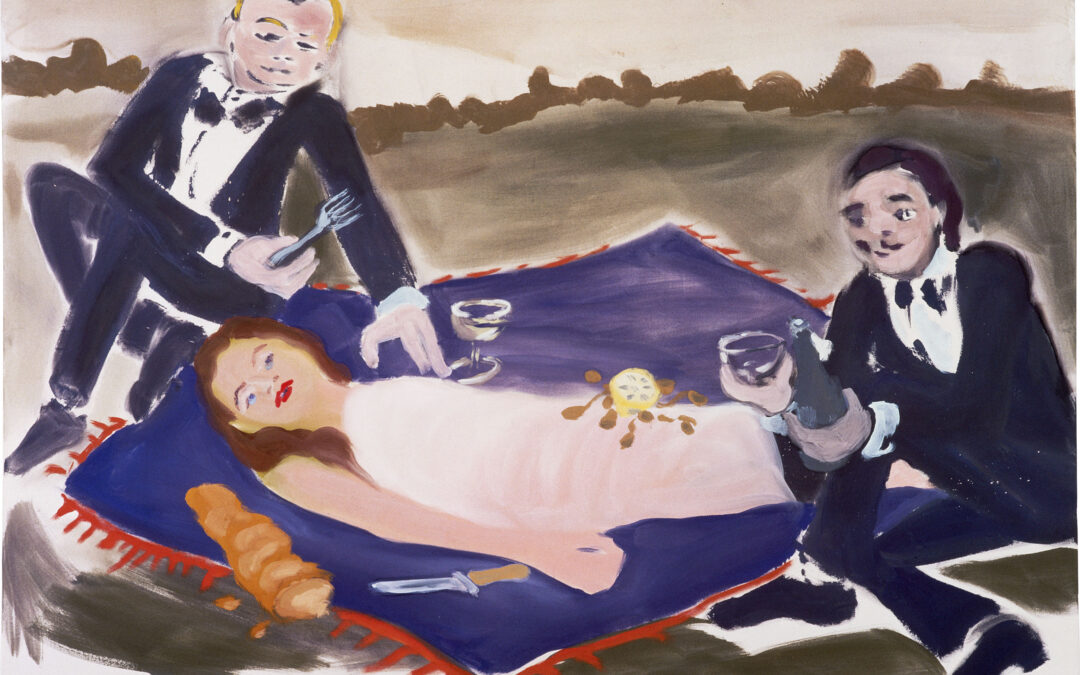Von Hellermann’s When he came. . . is a feminist complaint about male attitudes and a woman’s compliance? The concept is an allusion to Méret Oppenheim’s Le Festin (1959), a Surrealist banquet set on a nude woman’s body. Oppenheim originally intended the work to be an homage to feminine fertility. But in Andre Breton’s installation, it was provocatively renamed Cannibal Feast. Despite these mixed messages, it’s the food that is consumed, not the woman.
Von Hellermann’s woman is clothed in white and lies prone on a blue picnic blanket fringed in red. Over her groin is a flower or peeled fruit, perhaps a lemon. Next to her is a loaf of bread and a new knife. Two men in evening clothes sit next to the woman. One holds a fork and leans over the woman. The other has a champagne bottle and glass.
It may be that von Hellermann’s painting is an allusion to Méret Oppenheim’s manikin on a bed of roses was a centerpiece exhibited at the 1972 surrealist party given by the Guy and Marie-Hélène Rothschild.
See Sophie von Hellermann’s When he came. . . (2001); Méret (or Meret) Elisabeth Oppenheim. Le Festin, aka Spring Banquet (1959); Breton’s installation is on YouTube https://www.youtube.com/watch?v=1bvDpU8jrVM&ab_channel=PhilippeSzechter; William Klein Le Festin or Cannibal Feast (1959)

